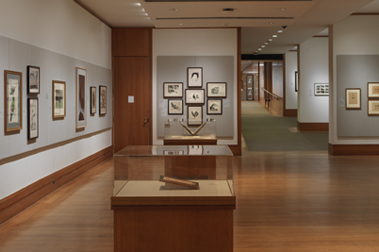Christ as the Man of Sorrows
Frans Crabbe van Espleghem Netherlandish
Not on view
Christ's unnaturally contorted figure typifies Crabbe's work in its peculiar melding of medieval Netherlandish stylistic conventions and classical Renaissance principles. In this modestly proportioned yet immensely powerful etching, Christ, in a traditional devotional portrayal, sits at the edge of a sepulchre, clutching the base of the cross. The column and the scourge, symbols of his flagellation loom behind. Crabbe distinguished forms by juxtaposing patterns: the hatching on Christ's body, the undulating grain of the cross, and the stippled surface of the edge of the tomb. Thus, at a time when artists were still experimenting with the etching technique, he created an exemplar of the varied tones and textures that the printed line can produce. While the abstraction of the composition and its agitated patterning--in particular in the loincloth's myriad folds--are reminiscent of late Gothic art, the source of Christ's pensive ose and muscular body can be traced to the German master Albrecht Dürer, whose prints were circulating throughout northern Europe. Dürer probably met Crabbe during a visit to the latter's native city of Mechelen in 1521. Crabbe's works are very rare; this print is known in only one other impression (Art Instittute of Chicago).
This image cannot be enlarged, viewed at full screen, or downloaded.




